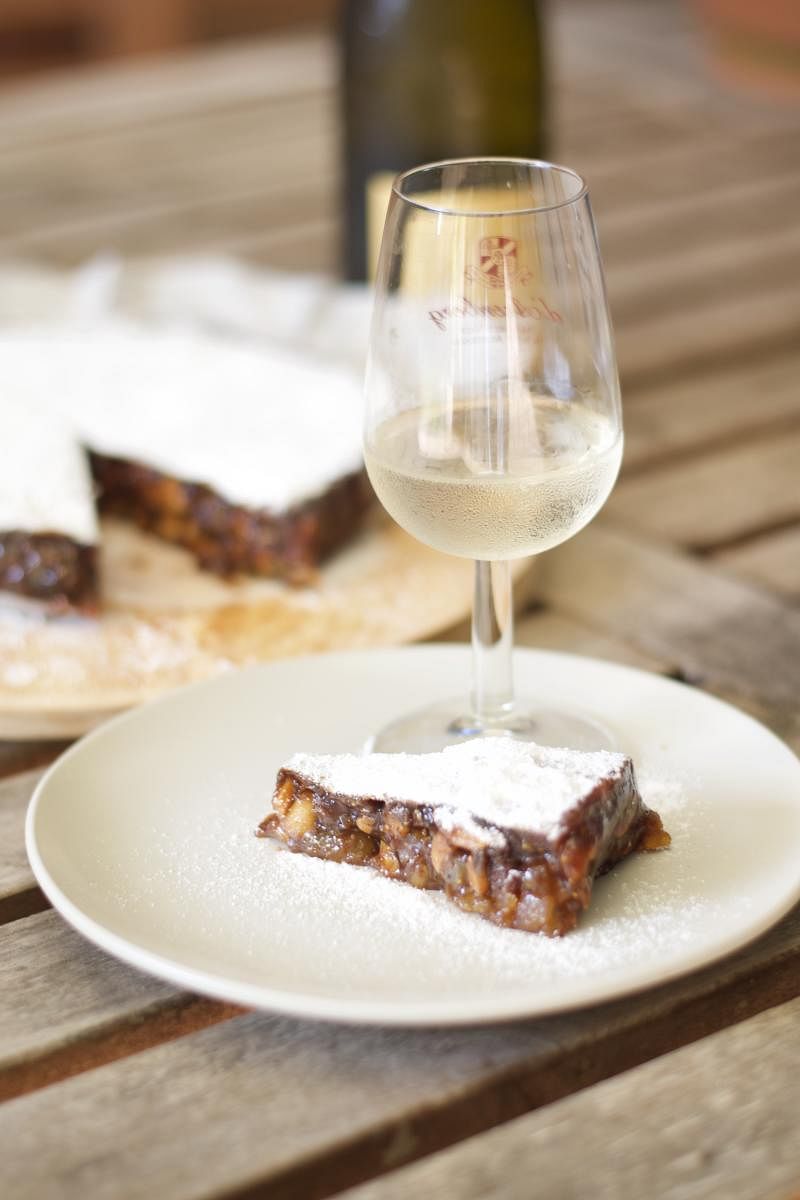Perfecting the iconic Panforte


Also known as Sienna cake, Panforte, which literally translates to strong bread, is an enduring legacy of the spice trade between Venice, the spice coast of India and the Far East. Its origin dates back to 1200 AD, from the humble panpepato, made with black pepper, to constant updates as new spices were brought to the kitchens of European aristocracy. Spices were a very valuable commodity back then, only royals and rich families could afford them. The spice growers from the west
coast of India, the Malayan peninsula, and as far as Java, traded spices with merchants undertaking the arduous journey through the Middle Eastern port of Basra and passing through Constantinople (modern-day Istanbul) reaching Venice. Venetian merchants sold them all over Europe and profits from the spice trade made Venice one of the richest cities of the medieval world.
Panforte was first thought to have been made by monks in the Tuscan city of Sienna and prescribed using 17 different ingredients depicting 17 “contrade” (districts) within the city walls. It is Tuscany’s answer to the ubiquitous Christmas fruit cake. Conceived in medieval kitchens, dried fruits and nuts are spiked with sweet spices, bound together by molten honey and sugar, and hearth-baked to perfection.
It’s best had with a glass of Tuscan sweet wine Vino Santo, or with a cup of coffee in the evening. It keeps well for months in the kitchen pantry, and could even moonlight as an energy bar after a morning run!
Panforte is much easier to make than a traditional fruit cake as it requires next to nothing “elbow grease” and is a pure joyous treat to put together and share. Use good quality honey, dried fruits, nuts and grind whole spices just before mixing.
Line an 8-inch round cake pan with baking paper. Cut and place a layer of edible rice paper at the base. A springform cake tin with a removable base makes it easy to remove the cake after baking. Set oven temperature to 165 °C. Place a small pan of water in the bottom tray of the oven to bring up the humidity.
Ingredients
110g chopped almonds
60g chopped hazelnuts
160g candied orange peel
80g dried apricots chopped
80g dried figs chopped
75g plain flour
5g cocoa powder
2g salt
335g honey
225g sugar
50g butter
5g cinnamon
3g nutmeg
3g clove
3g black pepper
Method
Mix dried fruits and nuts well in a large bowl. Sift the flour, salt and cocoa powder into the bowl. Grind spices, black pepper, cinnamon, clove and nutmeg and sift in to mix. Heat honey, sugar and butter together in a heavy bottom pan till the syrup reaches 115 °C or softball stage of sugar.
Pour the hot honey syrup into the bowl and mix with the dry ingredients thoroughly. Pour the cake mix into the lined cake pan and place another layer of rice paper to cover the top pressing gently onto the top of the mix to level. Bake at 165 °C for 1 hour. The top will still be soft to touch like a set custard. Panforte is ready when a thermometer probe in the centre reads 118 °C. Do not overcook it as it would harden when cooled down. Thoroughly cool it for at least 6 hours, preferably overnight. Cut and dust with icing sugar to serve. Panforte will stay for months if kept covered in a dry storage area of your kitchen.
(The author is a chef based in Brisbane, Australia. An exponent of regional Italian cuisine, he’s from the class of ‘94 IHM Kovalam and loves playing with fire. He’s an avid permaculture gardener and Border Collie whisperer.)